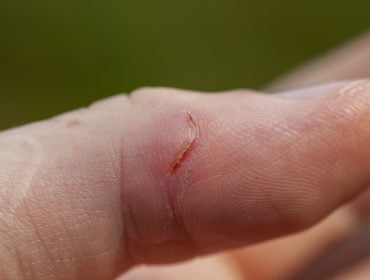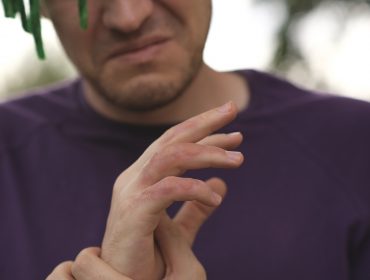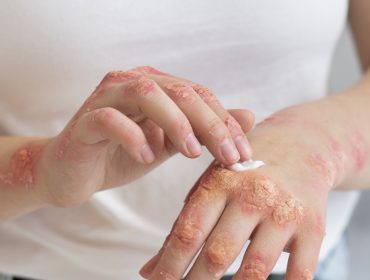Can You Get an STD from Fingering?
Fingering, an everyday sexual activity, involves using fingers to stimulate a partner’s genitals. While it is generally considered a low-risk activity in terms of sexually transmitted disease (STD) transmission, it is still essential to be aware of the potential risks and take necessary precautions. Education and awareness about STDs play a crucial role in prevention and early detection, ultimately contributing to better public health outcomes. As an STD testing company, we aim to promote sexual health by providing accurate information on the risks associated with various sexual activities, including fingering, and the importance of regular testing for sexually active individuals.
STD from Fingering
Fingering is a form of sexual activity that involves using one or more fingers to stimulate the genitals. It is often used as a way to explore and discover pleasure for both partners. Fingering can be done alone or with a partner and can be used as part of foreplay or during intercourse.
Although fingering is generally considered to be a low-risk activity, there are still risks associated with it. The most common risk is the transmission of sexually transmitted infections (STIs). STIs can be transmitted through contact with infected skin, so if either partner has an open sore or cut on their fingers, they should avoid any contact with the other person’s genitals. In addition, some STIs can be spread through skin-to-skin contact, even without any cuts or sores present. Therefore, it is essential to use protection such as condoms when engaging in fingering activities.
It is also important to practice safe fingering by using lubrication and taking breaks if necessary. Fingering without enough lubrication can cause friction and irritation, leading to small tears in the lining of the vagina or anus, which could increase the risk of infection. Taking breaks during fingering activities can help reduce this risk as well as help both partners enjoy themselves more fully. While fingering is generally considered a low-risk activity, it still holds risks that should not be ignored.

Common STDs and Their Transmission Through Fingering
Human Papillomavirus (HPV) – Human papillomavirus (HPV) is a group of 200+ related viruses, and some spread through skin-to-skin contact during sexual activity, including vaginal, anal, and oral sex. It is the most common STI in the United States, with an estimated 79 million Americans currently infected. HPV can also be spread through non-sexual activities such as fingering or sharing objects that have been exposed to the virus.
The virus can cause warts on different body parts and, in some cases, can lead to cervical cancer. According to the Centers for Disease Control and Prevention (CDC), about 12,000 women in the U.S. are diagnosed with cervical cancer yearly, and 4,000 die from it annually. The CDC also estimates that nearly 80% of women will get at least 1 type of HPV infection in their lifetime.
Fortunately, vaccines are available to help protect against certain types of HPV infections that can lead to cancer. Talking to your doctor about getting vaccinated if you’re between 9 and 26 years old is essential. Additionally, regular screening tests such as Pap smears can help detect any changes in cells caused by HPV before they become cancerous. Can you get HPV from fingering? Yes, you can.
Herpes Simplex Virus (HSV) – Herpes Simplex Virus (HSV) is a common viral infection that affects millions of people all around the world. There are two types of HSV: HSV-1 and HSV-2. Can you get herpes from fingering? Yes, you can.
HSV-1 is primarily responsible for causing oral herpes, which results in cold sores or fever blisters around the mouth. However, it can also cause genital herpes through oral-genital contact. According to the World Health Organization (WHO), an estimated 3.7 billion people under the age of 50 (67%) have HSV-1 infection globally.
HSV-2, on the other hand, mainly causes genital herpes, characterized by outbreaks of painful sores in the genital area. The WHO estimates that approximately 491 million people aged 15-49 (13%) have HSV-2 infection worldwide.
Transmission of HSV, both HSV-1, and HSV-2, can occur during fingering if there is direct contact with active sores or infected skin. Even without visible symptoms, the virus can still be present on the skin and transmitted through asymptomatic shedding. It is important to note that while the risk of transmission during fingering is relatively low compared to other sexual activities, it is not impossible.
To minimize the risk of HSV transmission during fingering, avoiding contact with active sores and considering using barriers such as gloves or finger cots is recommended. Also, maintaining open communication with partners about their HSV status and potential symptoms can help further reduce the risk. Can you get herpes from fingering?… absolutely.
Chlamydia and Gonorrhea – Chlamydia & gonorrhea are two common bacterial infections affecting millions worldwide. Both infections are sexually transmitted and can cause severe health complications if left untreated.
Chlamydia, caused by the bacterium Chlamydia trachomatis, is one of the most common sexually transmitted infections (STIs) globally. According to the World Health Organization, there were approximately 127 million new cases of chlamydia among adults aged 15-49 in 2016. In many cases, chlamydia is asymptomatic, which means that infected individuals may not display any symptoms, making it difficult to detect and increasing the risk of transmission.
Gonorrhea, caused by the bacterium Neisseria gonorrhoeae, is another prevalent STI. The WHO reports that there were around 87 million new cases of gonorrhea among adults aged 15-49 in 2016. Like chlamydia, gonorrhea can also be asymptomatic or cause mild symptoms that are often overlooked.
The risk of transmitting chlamydia and gonorrhea during fingering is relatively low compared to other sexual activities. However, transmission can occur through contact with infected genital secretions on the fingers. To minimize this risk, it is essential to practice good hand hygiene, consider using barriers such as gloves or finger cots, and engage in open communication with partners about their sexual health and any known infections. Can you get gonorrhea or chlamydia from fingering?… absolutely.
Syphilis – Syphilis is an STI caused by the bacterium Treponema pallidum. It is a complex disease that progresses through multiple stages and can cause many symptoms. If left untreated, syphilis can cause severe health complications.
Transmission of syphilis during fingering is possible if there is direct contact with a syphilis sore or rash. The risk is relatively low compared to other sexual activities. To reduce the risk of transmission, avoid contact with syphilis sores or penis rash, practice good hand hygiene, and consider using barriers such as gloves or finger cots.
Regular testing for syphilis is critical to detect and treat the infection early, preventing long-term complications and the spread of the disease. Open communication with partners about sexual health and potential infections is also vital in maintaining overall well-being. Can you get gonorrhea or syphilis from fingering?… absolutely.

Reducing the Risk of STD Transmission During Fingering
While the risk of STD transmission during fingering is generally lower than in other sexual activities, it’s still important to take precautions to protect yourself and your partner. Here are some key strategies to reduce the risk of STD transmission during fingering:
Importance of hand hygiene and cleanliness: Washing your hands thoroughly with soap and water before and after engaging in fingering can help reduce the risk of transmitting infections. Keeping your fingernails clean and trimmed can also prevent potential injury or irritation to your partner’s genitals, which may increase their vulnerability to disease.
Using barriers, such as gloves or finger cots: Barriers like latex or nitrile gloves and finger cots can minimize direct contact with genital fluids and sores, reducing the risk of transmitting infections like HPV, herpes, chlamydia, gonorrhea, or syphilis. Ensure you use a new barrier for each partner or when switching between different body parts (e.g., from the vagina to the anus) to avoid cross-contamination.
Open communication with partners about sexual health and potential infections: Maintaining honest and open communication with your partner(s) about your sexual health status, including any known infections or recent testing, is crucial for informed decision-making and risk reduction. Sharing this information allows both partners to make choices that prioritize their health and well-being, such as using barriers or abstaining from certain activities if there is a higher risk of transmission.
By following these guidelines and prioritizing sexual health, you can significantly reduce the risk of STD transmission during fingering, ensuring a safer and more enjoyable experience for all involved.

The Crucial Role of STD Testing and Early Detection
While the risk of STD transmission during fingering is generally lower than other sexual activities, it is still essential for sexually active individuals engaging in this activity to prioritize regular testing and early detection. Here’s why:
- Regular testing for sexually active individuals who are engaged in fingering: If you participate in fingering as part of your sexual activities, it’s crucial to get tested for STDs regularly. The frequency of testing depends on factors such as the number of partners, types of sexual activities, and any known exposure to infections. Regular testing allows for the timely identification of infections and helps prevent the spread of STDs to others.
- Benefits of early detection and treatment for both individual and public health: Detecting and treating STDs early can prevent severe health complications and long-term consequences, such as infertility, chronic pain, and increased risk of other infections like HIV. Early treatment also reduces the likelihood of transmitting the infection to others, contributing to better public health outcomes.
- Partner notification and testing to prevent further spread of infections: If you test positive for an STD, it’s essential to inform your current and past sexual partners so they can get tested and treated if necessary. This helps prevent the further spread of the infection and ensures that those affected receive appropriate care. Many healthcare providers and clinics offer assistance with partner notification, making the process more manageable and confidential.
In conclusion, prioritizing regular STD testing and early detection is vital for individual and public health, even when engaging in lower-risk activities like fingering. So, can you get an STD from fingering? Yes.
Medically Reviewed by Erin Zinkhan, MD, BSBE on June 6, 2023
Secure and Confidential
STD testing services
The fastest results possbile - available in 1 to 2 days

Tagged
Categorized As
Author: STD Check Editorial Team
At STDCheck.com, we go to great lengths to ensure quality content. We’re using our own collection of data. It is not bought or made up for “click-bait” purposes. We don’t entice traffic with cheesy graphics or raunchy headlines. Our information is to promote STD testing, educate people, let go of social stigmas, and bring awareness. We also provide a completely confidential atmosphere through private testing. When we produce an article, it is fact-based. We check it with medical advisors that approve it. Our staff consists of doctors and other medical professionals who peer review the content we make available on STDCheck.com. From all over the world, we have sourced the best and the brightest content developers, including medical professionals, marketing engineers, data scientists, content specialists, and media relations.




